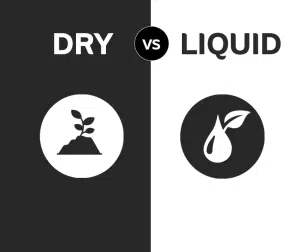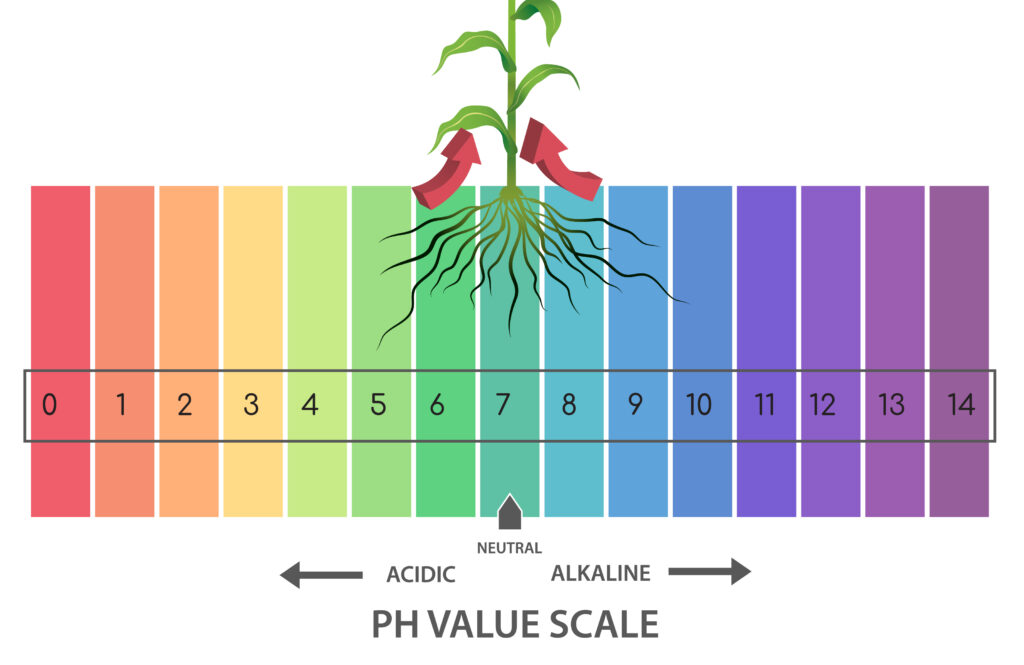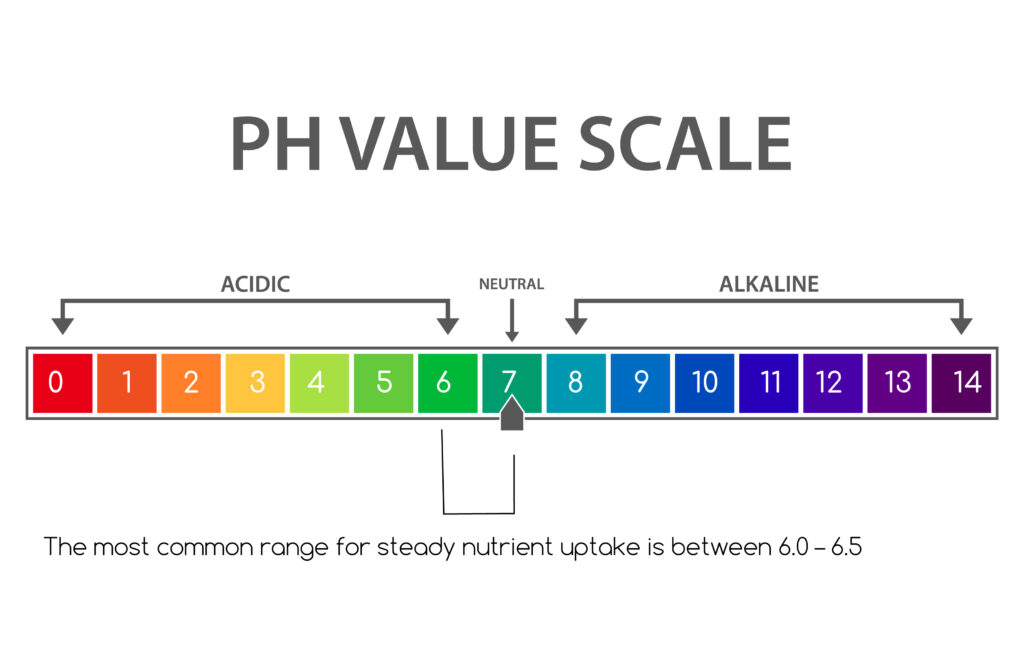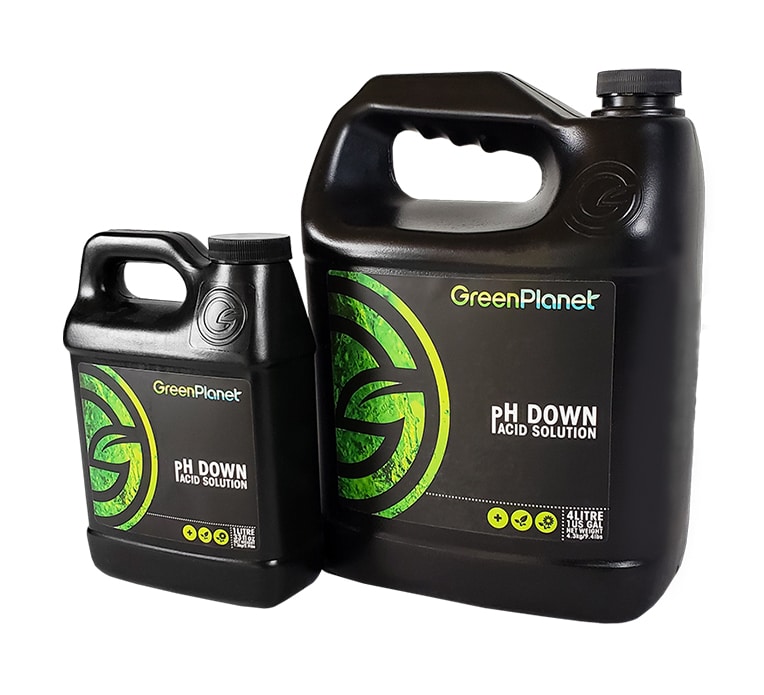
Inventory Count: Thursday, April 24th – Friday, April 25th. Resuming normal operations on Monday, April 28th. To avoid delays, check the order cutoff date: More Details
Recent Posts




Upcoming Events
Latest Comments


If you’ve recently noticed some leaf discoloration, mutation, or poor growth, it’s quite likely an inadequate pH range is the culprit behind these issues. pH is among the most important factors in the garden. But to understand it, we must first look at the basic biological functions of plants. In total, there are 16 essential elements that plants can absorb. These elements are divided into categories that contain nutrients that aim to support specific biological functions. However, to properly uptake these elements, plants must be fed within an adequate pH range. If you’re interested in learning more about the importance of testing your run-off, read the passages below.
Potential Hydrogen (pH) is a unit of measurement that describes the acidity or alkalinity of any given substance on a scale of 0-14, with 7 being neutral. In the field of gardening, however, pH is the main factor that dictates the uptake of nutrients in the root zone. Depending on the pH of your nutrient solution, your plants may uptake more or less of a specific element.

For plants to remain healthy and happy, they must be fed within an ideal pH range. For most plants in peat moss or soil-based systems, this pH range falls anywhere between 6.0 – 6.5. This scale can be thought of as the “sweet spot” for nutrient uptake. At this level, plants can uptake essential macro elements such as nitrogen, phosphorus, and potassium, while also having access to important micronutrients that help ward off common deficiencies and lead to the faster and healthier development of new growth.

To maximize the rate at which your plant uptakes available nutrients, attempt to buffer your nutrient solution in the ideal range before irrigating your crop. Most fertilizers (but not all) will hold an acidic pH value, meaning the ingredients incorporated within the fertilizer will lower the pH of water (pH 7.0) once mixed at the recommended rate. So, after mixing your nutrients, test the pH of your solution, and if necessary, buffer your fertilizer into the appropriate range (pH 6.0-6.5). Use pH Up to raise the pH value of your solution, and pH Down to lower it.

Only available in Canada
Tip: Dilute small amounts of pH Up or pH Down with water before adding it to your nutrient solution. This will help the solution adjust and decrease the chance of aggressive swings in pH value.
A variety of issues can arise if plants are not fed at an adequate pH range. For example, if plants are fed at a highly acidic rate, they will be unable to uptake and absorb valuable nutrients. This can lead to medium acidification, nutrient lockout, deficiencies, and the buildup of salts. If you’ve noticed worrisome growth patterns, it’s quite likely your plants are experiencing one or more of these issues. Follow the steps below to test the pH of your run-off and remedy the problem.

To test the pH of your plant’s run-off, start by collecting a sample. Begin by watering your plants with plain, neutral water (with a pH of 7.0) until roughly 20% of the water runs out of the bottom of your container. Then, collect the run-off into a container and test the sample. Ideal pH ranges for run-off should be between 6.0 – 6.5 in soil/soilless mixes like peat moss. However, any pH close to this range will be acceptable. If you test your solution and the pH deviates more than 1.0 from the ideal range, it’s clear that your plants are outside acceptable ranges of nutrient uptake. Remember, plain water acts like a solvent that rinses and neutralizes excess acidity. So, any number you receive from your run-off test is likely higher than the real pH value.

For any pH value under 5.5, consider feeding your crop at higher pH levels, or, buffer your medium with pH neutralizing compounds like calcium carbonate, dolomite lime, or oyster shell flour. After amending your medium with a neutralizing agent, the pH of your root zone should become stable over the next few irrigation cycles. As you water your plants, the pH neutral properties of either lime or oyster shell flour will slowly dissolve into the soil, thus raising the pH gradually over time. Resume your regular feeding schedule at a reduced rate and continue to re-test the pH of your run-off. When stable, your plants will be able to absorb all the essential nutrients offered to them. Soon, new, healthier growth patterns will emerge, and nutrient deficiencies will no longer plague the development of your crop.

Whatever your style of garden, chances are, GreenPlanet Nutrients has the perfect base nutrient program. To access the programs available at GreenPlanet Nutrients, contact a member of the GreenPlanet sales team, or your local garden supply store for product information and purchasing inquiries.
GP NUTRIENTS
COMPANY
CONSUMER
OUR WORLD
CONNECT
NEWSLETTER
usinfo@mygreenplanet.com
+1-866-913-4769
Monday: 8am – 4:30pm
Tuesday: 8am – 4:30pm
Wednesday: 8am – 4:30pm
Thursday: 8am – 4:30pm
Friday: 8am – 4:30pm
Saturday: Closed
Sunday: Closed
Week of Dec 18-22- Regular operating hours
Dec 25- Closed (Stat Holiday)
Dec 26- Closed (Non-Stat day off with pay)
Dec 27-29- Regular operating hours
Jan 1- Closed (Stat Holiday)
Jan 2-5- Regular operating hours
Recent Comments